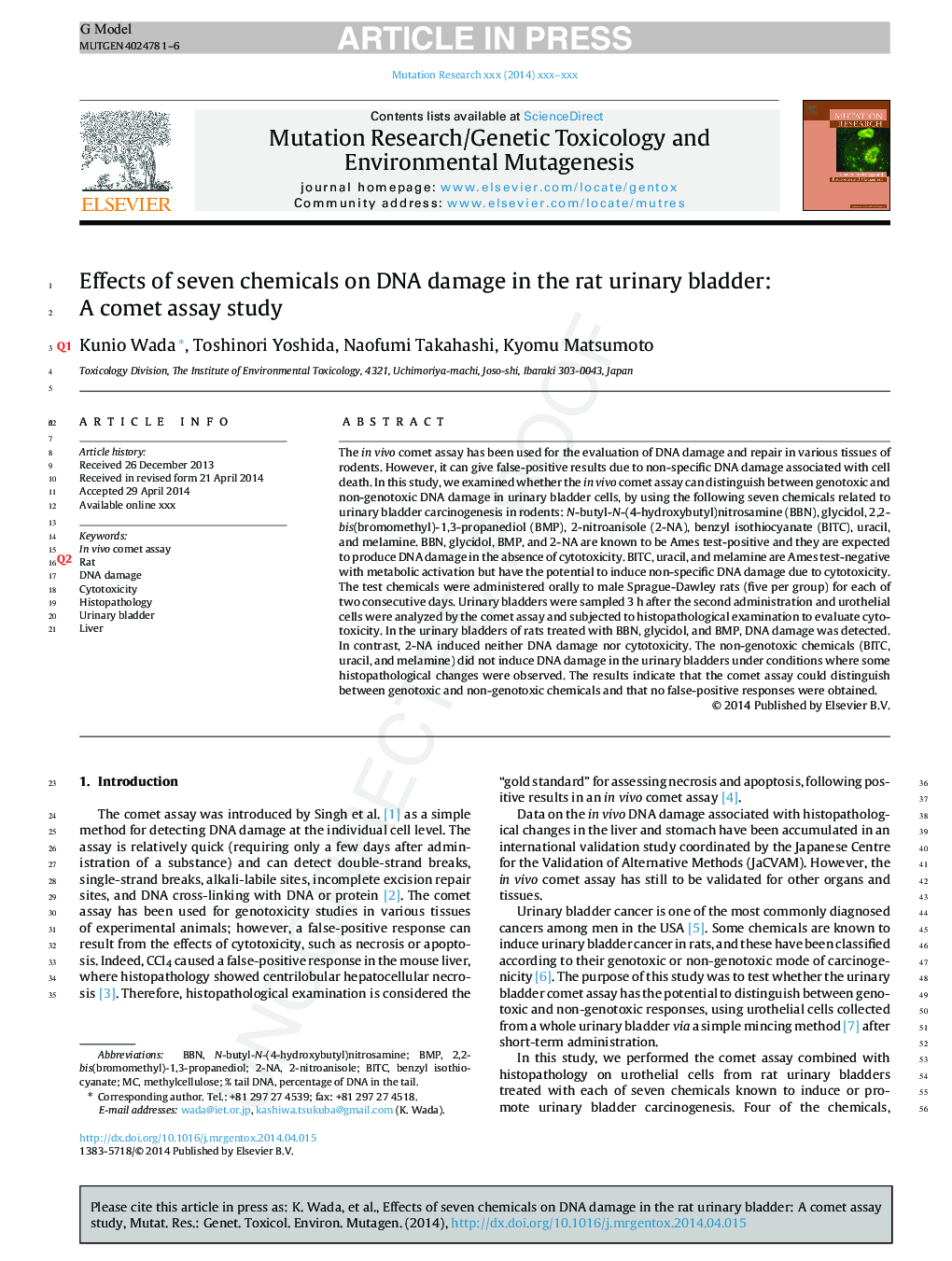| Article ID | Journal | Published Year | Pages | File Type |
|---|---|---|---|---|
| 8456458 | Mutation Research/Genetic Toxicology and Environmental Mutagenesis | 2014 | 6 Pages |
Abstract
The in vivo comet assay has been used for the evaluation of DNA damage and repair in various tissues of rodents. However, it can give false-positive results due to non-specific DNA damage associated with cell death. In this study, we examined whether the in vivo comet assay can distinguish between genotoxic and non-genotoxic DNA damage in urinary bladder cells, by using the following seven chemicals related to urinary bladder carcinogenesis in rodents: N-butyl-N-(4-hydroxybutyl)nitrosamine (BBN), glycidol, 2,2-bis(bromomethyl)-1,3-propanediol (BMP), 2-nitroanisole (2-NA), benzyl isothiocyanate (BITC), uracil, and melamine. BBN, glycidol, BMP, and 2-NA are known to be Ames test-positive and they are expected to produce DNA damage in the absence of cytotoxicity. BITC, uracil, and melamine are Ames test-negative with metabolic activation but have the potential to induce non-specific DNA damage due to cytotoxicity. The test chemicals were administered orally to male Sprague-Dawley rats (five per group) for each of two consecutive days. Urinary bladders were sampled 3Â h after the second administration and urothelial cells were analyzed by the comet assay and subjected to histopathological examination to evaluate cytotoxicity. In the urinary bladders of rats treated with BBN, glycidol, and BMP, DNA damage was detected. In contrast, 2-NA induced neither DNA damage nor cytotoxicity. The non-genotoxic chemicals (BITC, uracil, and melamine) did not induce DNA damage in the urinary bladders under conditions where some histopathological changes were observed. The results indicate that the comet assay could distinguish between genotoxic and non-genotoxic chemicals and that no false-positive responses were obtained.
Keywords
Related Topics
Life Sciences
Biochemistry, Genetics and Molecular Biology
Cancer Research
Authors
Kunio Wada, Toshinori Yoshida, Naofumi Takahashi, Kyomu Matsumoto,
